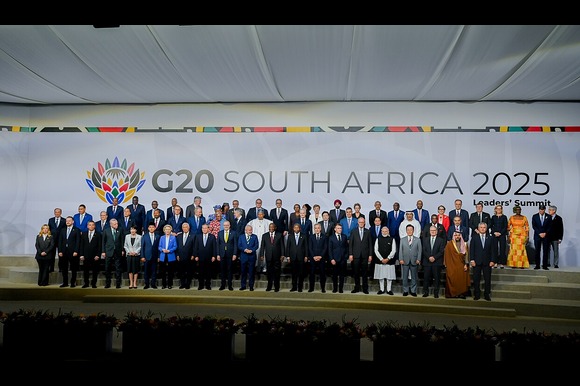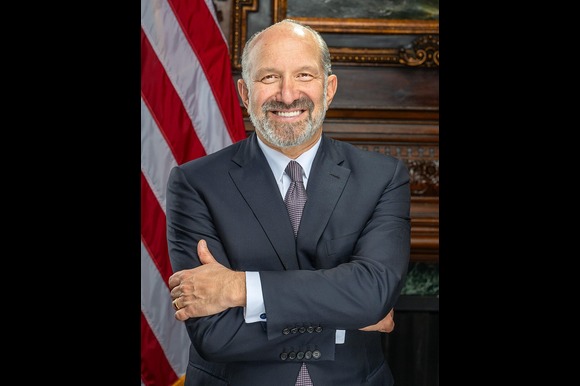
Photo by Karthikeyan Peruma
The World Bank has significantly downgraded its forecast for global economic growth in 2025, citing rising trade tensions, policy uncertainty, and the far-reaching impact of new tariffs introduced by the United States. In its latest Global Economic Prospects report released Tuesday, the bank projected global GDP growth at just 2.3 percent, a sharp drop from the 2.7 percent estimate made in January.
This marks the weakest global performance in 17 years outside of full-scale global recessions, underscoring widespread concern among international institutions about the fragility of the global economy. The World Bank cut growth forecasts for nearly 70 percent of economies worldwide, including major players such as the United States, China, and nations in Europe, alongside six emerging market regions. These projections reflect a deteriorating economic outlook shaped by escalating protectionism under US President Donald Trump.
“Global growth and inflation prospects have darkened due to high levels of policy uncertainty and growing fragmentation in global trade relations,” said Indermit Gill, chief economist at the World Bank Group. “Without a swift course correction, the harm to living standards could be deep,” he warned.
Looking further ahead, the World Bank estimates that by 2027, global GDP growth will average just 2.5 percent for the 2020s—potentially the slowest growth rate of any decade since the 1960s.
Impact of Trump’s Trade Policies
The downward revision comes amid the fallout from President Trump’s aggressive trade measures. In April, the US imposed a 10 percent tariff on imports from nearly all of its trading partners, as well as higher duties on steel and aluminum. Initially proposing much steeper hikes for dozens of countries, Trump later suspended many of those increases until early July, injecting further unpredictability into global markets.
These on-again, off-again tariffs have rattled the global trade environment, pushing the effective US tariff rate from under 3 percent to the mid-teens—its highest level in almost a century. The moves triggered retaliatory actions from China and other nations, with tit-for-tat measures sparking volatility. While the US and China have momentarily eased their trade war, uncertainty lingers over whether a durable resolution can be reached.
Although the World Bank noted that advanced economies are facing sharper downgrades in the near term, it warned that developing countries may be more vulnerable in the long run due to specific structural issues.
Trouble Ahead for Developing Economies
Chief among those challenges is the projected slump in commodity prices through 2025 and 2026. According to Gill, this poses a significant threat to roughly 60 percent of emerging markets and developing countries that rely heavily on commodity exports. These nations now face a difficult mix of lower commodity revenues and heightened market volatility.
By 2027, while high-income countries are expected to return to pre-pandemic per capita GDP levels, developing economies—excluding China—may remain 6 percent below their pre-pandemic trajectories. For many of these nations, it could take nearly two decades to recover fully from the economic scarring of the 2020s.
Even as growth forecasts decline, inflation projections have risen, intensifying the pressure on policymakers to manage inflation risks without choking off growth.
A Call for Trade Reforms
Despite the daunting outlook, Gill expressed optimism that coordinated global policy efforts could mitigate long-term damage. He called on countries, particularly those in the Group of 20 (G20), to reduce disparities in trade measures and avoid focusing liberalisation efforts solely on the US.
“It’s not enough to just liberalise with respect to the US. It’s also important to liberalise with respect to others,” Gill emphasized. He urged countries to lower tariffs universally and expand preferential trade agreements into comprehensive pacts that address the full scope of cross-border regulations.
Developing countries, he noted, tend to have higher tariffs than wealthier counterparts, often to shield emerging industries or compensate for limited tax revenues. Reforming these frameworks, the World Bank argues, could provide a much-needed growth boost.
Broader Consensus on Gloomy Outlook
The World Bank’s grim forecast aligns with warnings from other major international bodies. Earlier this month, the Organisation for Economic Co-operation and Development (OECD) cut its global growth estimate for 2025 from 3.1 percent to 2.9 percent, citing the damaging impact of US tariffs.
Likewise, in April, the International Monetary Fund (IMF) downgraded its own 2025 forecast from 3.3 percent to 2.8 percent, also attributing the revision to the fallout from Trump’s protectionist policies.
As these institutions continue to sound the alarm, the consensus is clear: unless global policymakers act decisively to stabilize trade relations and manage inflation, the global economy could be headed for a prolonged period of underperformance.




